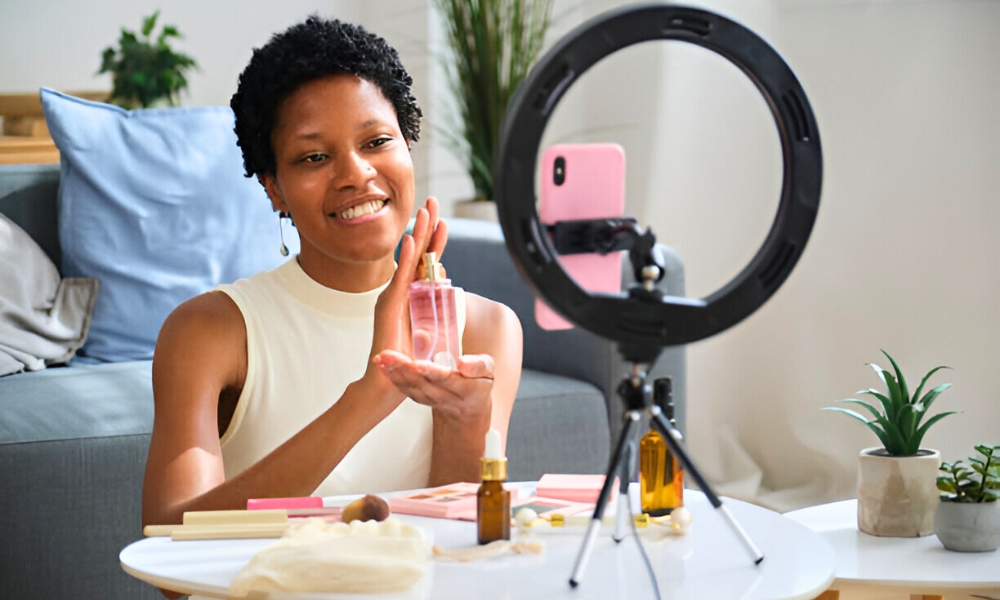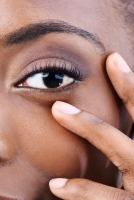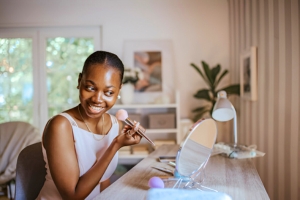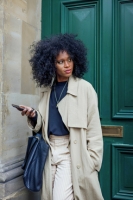
4-minute read
Let’s be honest—the Hidden Agenda Behind Beauty Ads is everywhere. They follow us on our phones, pop up in our social feeds, and even sneak their way into our subconscious when we least expect it. One minute you’re just watching a YouTube video, and the next, you’re questioning if your skin is really hydrated enough because some airbrushed model is aggressively patting serum onto her already flawless face.
For years, I bought into it. I wasn’t necessarily throwing my entire bank account at the beauty industry (let’s be real, that money went on food), but I was definitely convinced that if I just found the right product, I’d finally unlock my ultimate level of attractiveness. That’s the thing about beauty ads—they don’t just sell you a product, they sell you a problem first. And once you start looking for that “problem” in the mirror? Oh, they’ve got you.

Ever noticed how beauty ads have a magical way of making you question things you weren’t even thinking about before?
One day, you’re minding your business, living your life, and then suddenly—BAM!—a glossy campaign tells you that your under-eyes are “too dark” or your pores are “too visible.” Listen, you didn’t even know you had visible pores until that ad zoomed in at a microscopic level! And just like that, you’re wondering if you need a ten-step skincare routine for an issue that didn’t even exist in your head before.
That’s the game. The beauty industry thrives on our insecurities, and when they can’t find enough of them, they create new ones. Wrinkles, stretch marks, uneven skin tone, “too much” texture, “not enough” glow—there’s always something that apparently needs fixing. And because society is so deeply invested in policing women’s appearances, we don’t even question it. We just start adding more products to the cart.
And let’s not pretend this isn’t targeted. Black women, in particular, are fed an extra layer of beauty insecurity, often revolving around Eurocentric standards. If it’s not our hair being called “unruly” (code for “doesn’t flow like white hair”), it’s our skin tone being erased from foundation ranges or our features being deemed “too strong” unless they’re placed on a Kardashian.

You ever see those ads for a “natural” or “no-makeup” look and think… now wait a minute?
They’ll have models with perfectly sculpted brows, dewy-yet-matte skin (how??), and lips that look like they just rolled out of bed effortlessly plump. Meanwhile, you try it, and it turns out their “no-makeup” look actually requires about ten different products, including one you must apply with a brush that costs more than your weekly food shop.
The hidden agenda here? The idea suggests that beauty should be effortless—but we must constantly maintain it. It’s not enough to wear makeup, you have to make it look like you just naturally woke up with softly flushed cheeks and glowy skin. The work that goes into looking “effortless” is ironically, a lot of effort.
And don’t get me started on “clean beauty” marketing. Some brands love to imply that if you’re not using their organic, all-natural, toxin-free product, then you’re basically slathering poison onto your face. Never mind the fact that half of these “clean” brands are just rebranding ingredients that have been in our kitchen cabinets for years. (Turmeric face mask? Please, our communities have been on this long before the beauty industry decided to cash in.)

Another little trick beauty ads love? Making you believe that expensive automatically means better.
I’ve walked through high-end beauty counters in department stores and the way luxury brands position themselves is interesting. The sleek displays, the soft lighting, the air of exclusivity—it’s all designed to make you feel like you’re stepping into a world you should want to be part of. But let’s be real, a £200 face cream probably has the same basic ingredients as a £20 one, just with fancier packaging and a name in French.
That’s the hidden agenda behind beauty Ads—the more we associate beauty with status, the more we’re willing to pay for it. It’s no longer just about looking good; it’s about having the product that makes you look like you’re part of a certain elite. And brands know this. That’s why they’ll slap “rare ingredients” on the label and hope you don’t question whether crushed pearls and unicorn tears are really necessary for clear skin.
Look, I’m not saying don’t buy beauty products. I love a good skincare routine as much as the next person, and there’s nothing wrong with wanting to enhance what you’ve got. But what I am saying is—let’s start questioning what brands are selling us.
Before you add something to your basket, ask yourself:
The moment you start asking these questions, you take back control. Because beauty should be fun, expressive, and your choice—not something dictated by brands who profit from making us feel like we’re not enough.
So the next time an ad tries to convince you that your skin needs to be smoother, your hair needs to be sleeker, or your lips need to be plumper—just remember, you were fine before they told you otherwise.
And that, my friends, is the real beauty secret—the Hidden Agenda Behind Beauty Ads is to make you think otherwise.
Thank you for reading! If this post made you think twice about beauty ads, let’s talk—drop your thoughts in the comments.
4-minute read Have you ever found yourself lying awake at night, heart heavy with worry about your teenager’s safety during interactions with the police? It’s a question that lingers for many parents and caregivers, especially when history and statistics both
4-minute read I’ve spent a lot of time thinking about beauty—what it means, who gets to define it, and whether it’s really as inclusive as we like to think. And the more I look at it, the more I realize
4-minute read Have you ever found yourself stressing over every single pound while worrying about how to teach your kids the value of money? It’s a reality for many families, and let’s be honest—it’s not always easy. Despite the struggle,